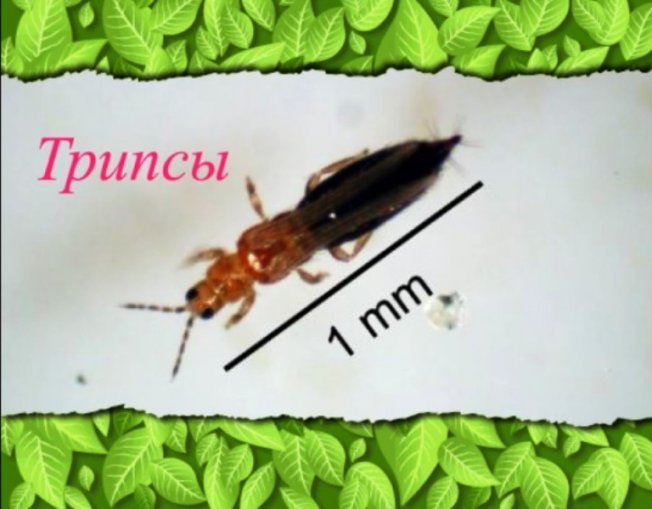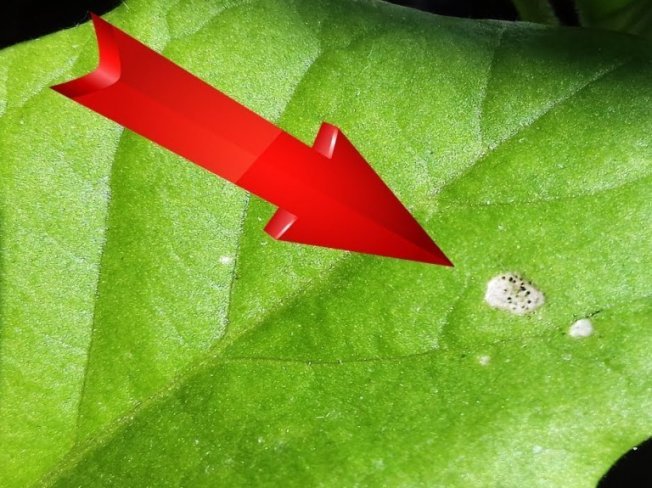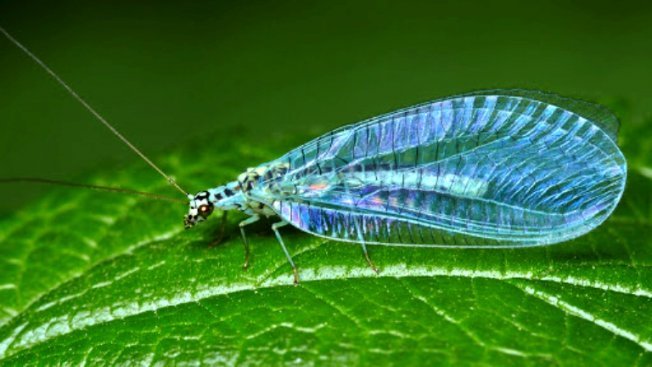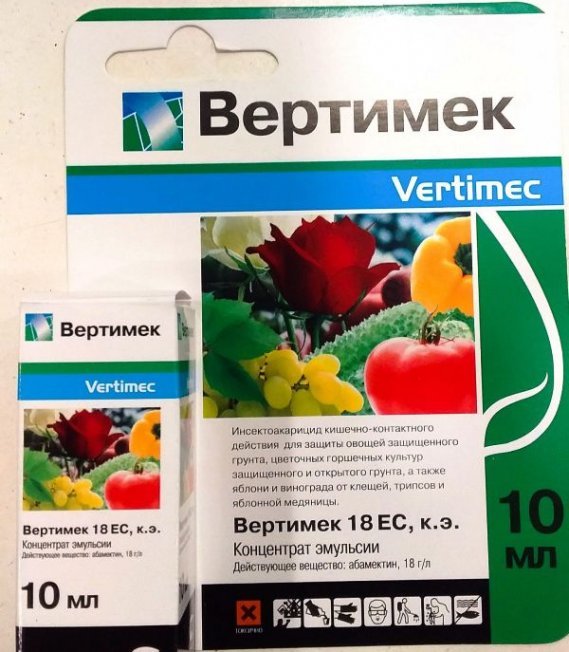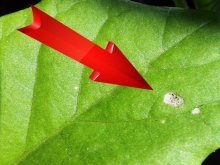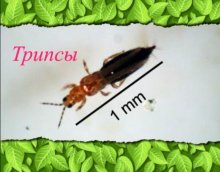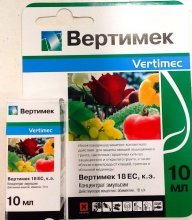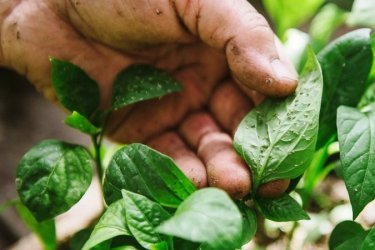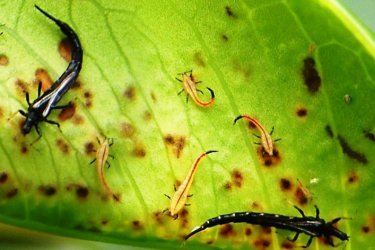Thrips on bell peppers, symptoms of damage, methods of control and prevention
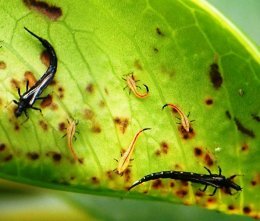
Many summer residents know firsthand about insects that cause significant damage to vegetable plants. For example, thrips that have settled on bell peppers reduce crop yields, sometimes even causing the death of bushes.
Content:
- Thrips, what they are, what they look like in the photo
- Symptoms of infection, or who eats bell pepper leaves
- How to prevent infection
- Treatment with folk remedies
- We fight thrips on bell peppers using chemicals
- TOHow to fight thrips on seedlings
Thrips, what they are, what they look like in the photo
These insects are quite common throughout the world; of all the 6,000 species known to science, hundreds are herbivorous pests. The problem of thrips control aggravated by their very small size, most species are between 0.05 and 0.3 cm in length, and their secretive lifestyle.
Insects reproduce actively; in a greenhouse, the population can produce up to 15 generations in a year. The lifespan of an individual is 25-45 days, the temperature at which the insect leads an active life and reproduces is from +15 C to +30 C.
Pests affect all types of garden ornamental plants; thrips on bell peppers, cucumbers, and eggplants are often observed in open ground greenhouses; indoor flowers are not immune from them.
Thrips have an elongated body, usually 1-2 mm, a piercing-sucking mouthparts and thin legs with suction devices. The wings are narrow, shortened, trimmed with fringe, insects fly poorly. The development of an insect occurs in 5 stages, passing through the stages of egg, larva, pronymph, nymph and adult. You can examine the enemy in more detail only under a magnifying glass or in a photo.
Thrips feed on plant juices, but there are species that prefer fungi and small invertebrates. Representatives of the genus Scolotrips are classified as predators; they feed on spider mites, and the species Aelotrips prefers the larvae and eggs of herbivorous thrips species.
Some of the pest species are quarantine objects: they are carriers of 20 viruses that can cause plant diseases, in particular tropoviruses.
The most common pests of vegetable crops are polyphagous insects: polyphagous and onion (tobacco). They are black and dark brown in color, respectively; the length of the insect can reach 2 mm, i.e. they can be seen with the naked eye.
Let's watch a useful video about thrips and the fight against them:
Symptoms of infection, or who eats bell pepper leaves
When inspecting affected plants, you should pay attention to:
- change or loss of color in the leaves, acquiring a silvery tint;
- curvature of stems and deformation of ovaries and flowers;
- the appearance on the leaves of clearly visible necrotic spots and streaks, which merge over time.
Damaged stems become bent, flowers and ovaries are deformed. The next stage of damage is the death of damaged tissues and wilting.
Symptom of thrips infestation Pepper leaves may also be sticky: colonies of thrips contaminate them with their secretions.
Thrips on bell peppers are very dangerous: if they are massively infected, they can cause the death of the plant.
How to prevent infection
You can avoid the massive spread of thrips by following simple rules for caring for your beds:
- in the fall, all weeds should be removed from the beds, they can serve as a wintering site for pests;
- the soil should be carefully dug up or plowed to a depth of 25-27 cm;
- Plant residues should not be stored on the beds; they should be removed into compost heaps.
Preserving onion and garlic planting material at room temperature leads to the proliferation of pests directly in the bulbs; after planting them in the ground, lesions are observed already in May, insects quickly spread to other vegetable crops. It is recommended to store planting material at temperatures below + 9 C; the vital activity of thrips in such conditions ceases.
For preventive purposes, it is practiced to attract natural enemies of thrips to the site: ladybugs, hover flies, and lacewings.
Foliar feeding of pepper with superphosphate extract or other substances that change the biochemical composition of plant tissues helps prevent infection.
Systematic thorough inspections of plants in the garden beds and prompt adoption of measures to eliminate pests will help prevent the spread of dangerous insects.
Treatment with folk remedies
You can effectively fight thrips on bell peppers and other crops using folk remedies:
- spraying plants with infusion of leaves and flowers of dandelion, marigolds, tomatoes, celandine, tobacco.The crushed plants are poured with water and infused for 24 hours. Spraying is carried out every week;
- spraying with a diluted extract of chopped garlic;
- treatment with a decoction of onion peels (2 cups per 10 liters of water) with the addition of liquid soap (20 g);
- planting marigolds, mint, basil along the edges of the beds with bell peppers, or in the inter-row spaces;
- mustard solution (1 tablespoon per 20 liters of water).
It will be necessary to repeat treatments of thrips-infected peppers systematically, with a break of 7-10 days.
Increasing the humidity in the beds has a good effect.
Insect traps that are bright yellow and blue can be used as means that are harmless to humans. Traps will help you quickly detect the presence of pests and reduce their numbers.
We fight thrips on bell peppers using chemicals
If the area infested with thrips is large, or you want to act “for sure,” then you will need to use professional plant protection products. There are many insecticides designed to combat thrips. First of all, you should pay attention to systemic drugs. They provide a long protective period; their effectiveness is not reduced by precipitation.
Active substances. which are contained in the preparation penetrate into the plant tissue and make it toxic to pests. It does not have a negative impact on plant development. Let's look at the most effective drugs.
Confidor from Bayer
The drug has contact-systemic action. It has a long period of action and high resistance to rinsing. Can be used for application under the roots of plants along with mineral fertilizers.
Actellik 500 EC from Syngenta
A highly toxic product, available in the form of an emulsion. Can be used in open ground, greenhouses, greenhouses. Effectively affects small insect pests, is easy to use, and has a low cost.
Vertimek 018 EC from Syngenta
An insecticide of contact-intestinal action, available in the form of an emulsion concentrate. Effective against ticks and thrips.
The property of the drug to completely cover the sheets accelerates the process of contact with pests; complete destruction occurs within 2 days. It is used sparingly; 1 ml of the drug is required for 1 liter of water.
Does not cause burns on leaves.
Aktara from Syngenta Crop Protection AG, Switzerland
It is classified as slightly toxic and can protect crops from several types of pests for a long period. Resistant to washing away by precipitation and solar insolation. It can be used as a sheet and applied to the soil. Effective in controlling insects living on the underside of leaves.
Consumption rates are low and can be used as part of tank mixtures. Active at high air temperatures and low humidity.
Fitoverm from MBC Pharmbiomed
The effect is contact-intestinal, causing paralysis of insects and their death. When tested, the effectiveness of the drug ranged from 95 to 100%. It quickly breaks down in soil and water and does not pollute the environment. Duration of action is from 7 to 20 days, depending on the weather. When the air temperature rises, the effectiveness of the action does not decrease. Do not mix with other plant treatment products!
Systemic agents are applied 2 times a season.
But if thrips have already been detected on bell peppers, then to completely get rid of them you will need to repeat the treatment after 7-10 days. If necessary, a third treatment can be carried out at the same interval.
The products should be used strictly in accordance with the instructions, which indicate:
- how to dilute the drug;
- in what weather to process plants;
- consumption rate per 1 hundred square meters;
- permissible frequency of treatments.
Let's watch an interesting video about the fight against thrips:
How to deal with thrips on seedlings
Containers for growing seedlings and soil are disinfected before sowing seeds. Carefully monitor soil moisture and, if possible, provide air humidification.
The plants are periodically carefully inspected, especially the lower part of the leaves. Also monitor for other symptoms of thrips infestation. To enhance control, you can install yellow and blue sticky traps in containers with seedlings; they are sold in flower shops.
If pests are detected, insecticides should be applied and treated three times, with an interval of 7 days.
Heavily infested plants may need to be removed.
Thrips on bell peppers or any other vegetable crops are serious pests. If they are detected, all possible measures should be taken to destroy them as quickly as possible.
Pests

